Deep Fusion of RGB and NIR Paired Images Using Convolutional Neural Networks

Auto-TLDR; Deep Fusion of RGB and NIR paired images in low light condition using convolutional neural networks
Similar papers
Near-Infrared Depth-Independent Image Dehazing using Haar Wavelets
Sumit Laha, Ankit Sharma, Shengnan Hu, Hassan Foroosh

Auto-TLDR; A fusion algorithm for haze removal using Haar wavelets
Abstract Slides Poster Similar
Automatical Enhancement and Denoising of Extremely Low-Light Images
Yuda Song, Yunfang Zhu, Xin Du

Auto-TLDR; INSNet: Illumination and Noise Separation Network for Low-Light Image Restoring
Abstract Slides Poster Similar
Dynamic Low-Light Image Enhancement for Object Detection Via End-To-End Training
Haifeng Guo, Yirui Wu, Tong Lu

Auto-TLDR; Object Detection using Low-Light Image Enhancement for End-to-End Training
Abstract Slides Poster Similar
A Dual-Branch Network for Infrared and Visible Image Fusion

Auto-TLDR; Image Fusion Using Autoencoder for Deep Learning
Abstract Slides Poster Similar
Video Lightening with Dedicated CNN Architecture
Li-Wen Wang, Wan-Chi Siu, Zhi-Song Liu, Chu-Tak Li, P. K. Daniel Lun

Auto-TLDR; VLN: Video Lightening Network for Driving Assistant Systems in Dark Environment
Abstract Slides Poster Similar
Thermal Image Enhancement Using Generative Adversarial Network for Pedestrian Detection
Mohamed Amine Marnissi, Hajer Fradi, Anis Sahbani, Najoua Essoukri Ben Amara

Auto-TLDR; Improving Visual Quality of Infrared Images for Pedestrian Detection Using Generative Adversarial Network
Abstract Slides Poster Similar
CSpA-DN: Channel and Spatial Attention Dense Network for Fusing PET and MRI Images
Bicao Li, Zhoufeng Liu, Shan Gao, Jenq-Neng Hwang, Jun Sun, Zongmin Wang
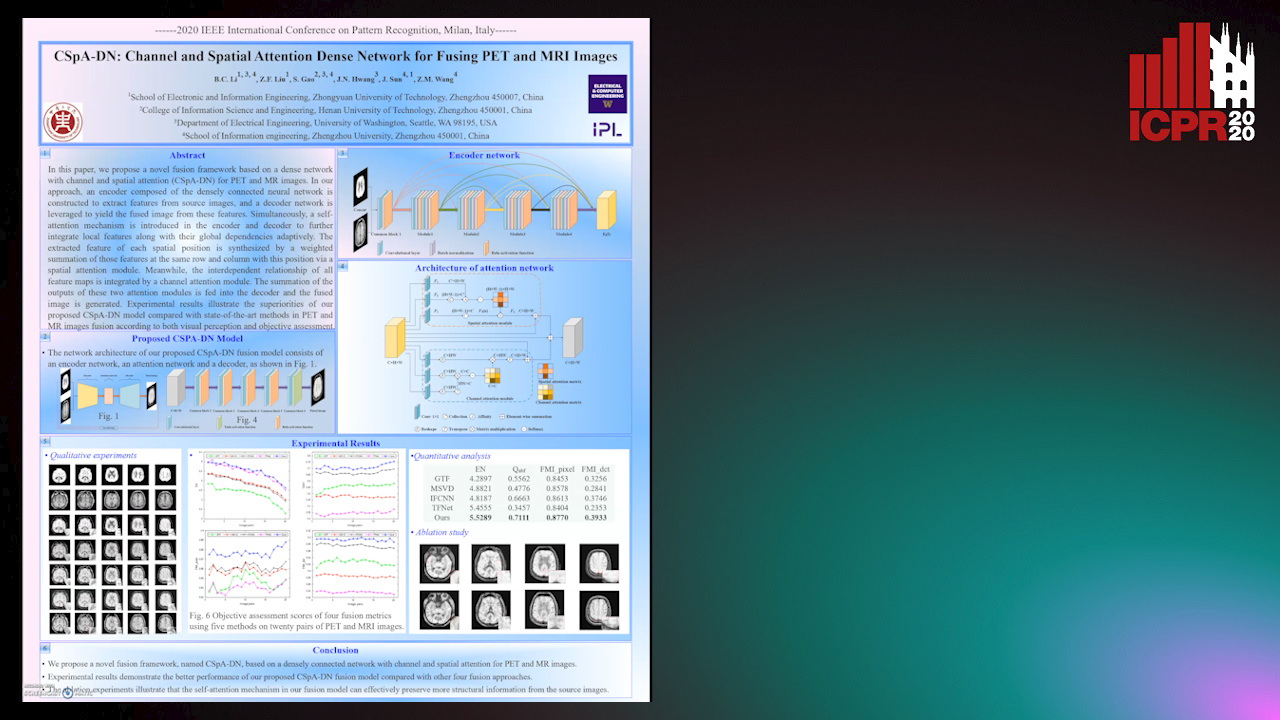
Auto-TLDR; CSpA-DN: Unsupervised Fusion of PET and MR Images with Channel and Spatial Attention
Abstract Slides Poster Similar
DSPNet: Deep Learning-Enabled Blind Reduction of Speckle Noise
Yuxu Lu, Meifang Yang, Liu Wen

Auto-TLDR; Deep Blind DeSPeckling Network for Imaging Applications
Edge-Guided CNN for Denoising Images from Portable Ultrasound Devices
Yingnan Ma, Fei Yang, Anup Basu

Auto-TLDR; Edge-Guided Convolutional Neural Network for Portable Ultrasound Images
Abstract Slides Poster Similar
Multi-focus Image Fusion for Confocal Microscopy Using U-Net Regression Map
Md Maruf Hossain Shuvo, Yasmin M. Kassim, Filiz Bunyak, Olga V. Glinskii, Leike Xie, Vladislav V Glinsky, Virginia H. Huxley, Kannappan Palaniappan
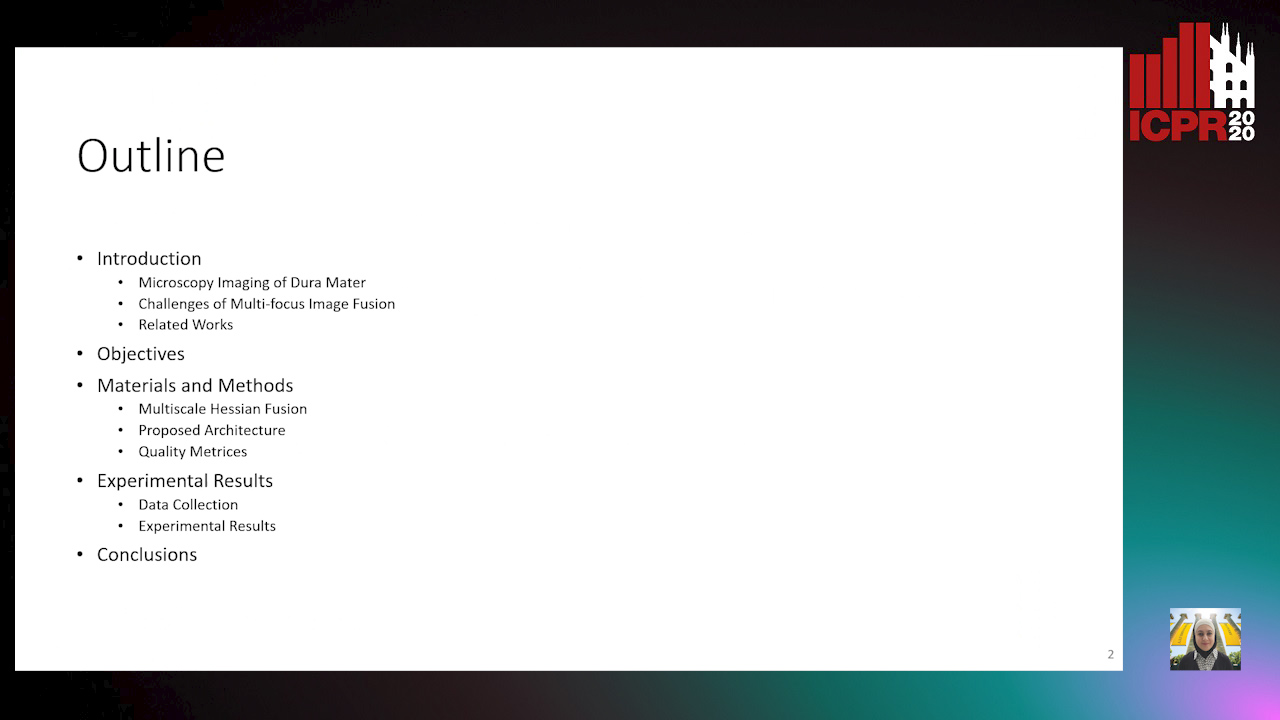
Auto-TLDR; Independent Single Channel U-Net Fusion for Multi-focus Microscopy Images
Abstract Slides Poster Similar
LFIEM: Lightweight Filter-Based Image Enhancement Model
Oktai Tatanov, Aleksei Samarin

Auto-TLDR; Image Retouching Using Semi-supervised Learning for Mobile Devices
Abstract Slides Poster Similar
Boosting High-Level Vision with Joint Compression Artifacts Reduction and Super-Resolution
Xiaoyu Xiang, Qian Lin, Jan Allebach

Auto-TLDR; A Context-Aware Joint CAR and SR Neural Network for High-Resolution Text Recognition and Face Detection
Abstract Slides Poster Similar
Hierarchically Aggregated Residual Transformation for Single Image Super Resolution

Auto-TLDR; HARTnet: Hierarchically Aggregated Residual Transformation for Multi-Scale Super-resolution
Abstract Slides Poster Similar
Fast Region-Adaptive Defogging and Enhancement for Outdoor Images Containing Sky
Zhan Li, Xiaopeng Zheng, Bir Bhanu, Shun Long, Qingfeng Zhang, Zhenghao Huang

Auto-TLDR; Image defogging and enhancement of hazy outdoor scenes using region-adaptive segmentation and region-ratio-based adaptive Gamma correction
Abstract Slides Poster Similar
Deep Universal Blind Image Denoising

Auto-TLDR; Image Denoising with Deep Convolutional Neural Networks
DR2S: Deep Regression with Region Selection for Camera Quality Evaluation
Marcelin Tworski, Stéphane Lathuiliere, Salim Belkarfa, Attilio Fiandrotti, Marco Cagnazzo

Auto-TLDR; Texture Quality Estimation Using Deep Learning
Abstract Slides Poster Similar
CURL: Neural Curve Layers for Global Image Enhancement
Sean Moran, Steven Mcdonagh, Greg Slabaugh
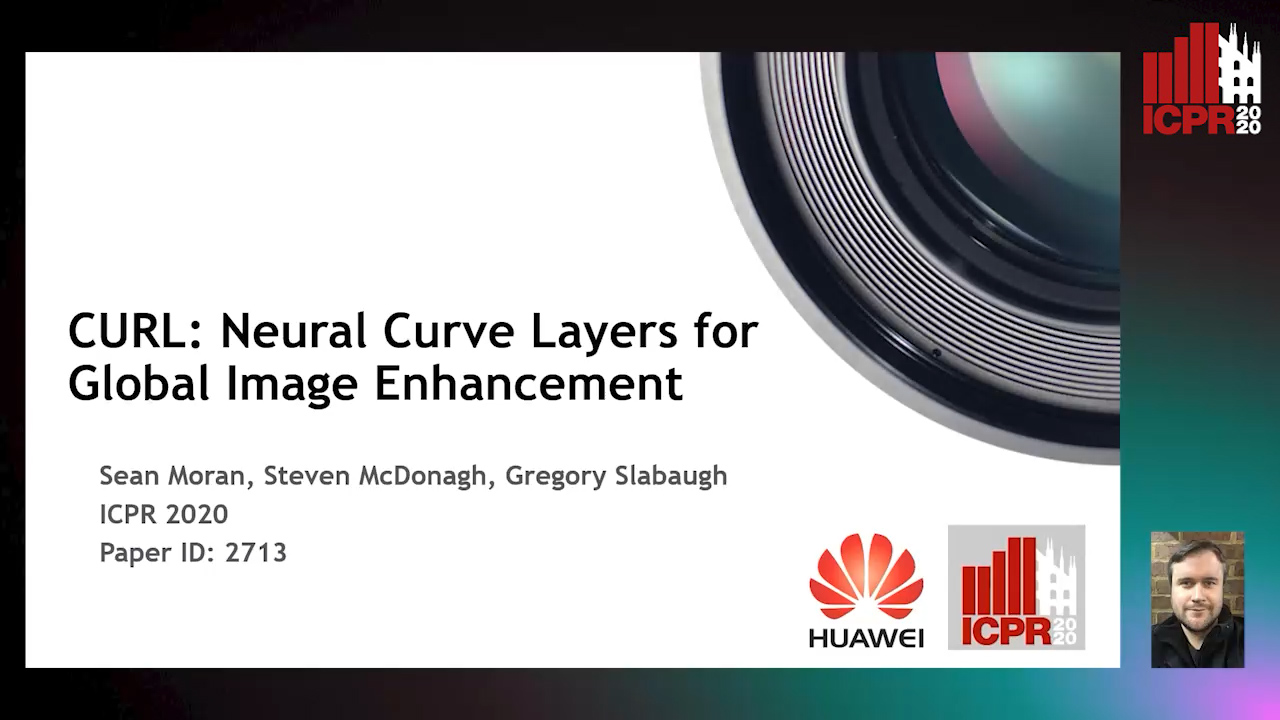
Auto-TLDR; CURL: Neural CURve Layers for Image Enhancement
Abstract Slides Poster Similar
Exemplar Guided Cross-Spectral Face Hallucination Via Mutual Information Disentanglement
Haoxue Wu, Huaibo Huang, Aijing Yu, Jie Cao, Zhen Lei, Ran He

Auto-TLDR; Exemplar Guided Cross-Spectral Face Hallucination with Structural Representation Learning
Abstract Slides Poster Similar
D3Net: Joint Demosaicking, Deblurring and Deringing
Tomas Kerepecky, Filip Sroubek

Auto-TLDR; Joint demosaicking deblurring and deringing network with light-weight architecture inspired by the alternating direction method of multipliers
A Multi-Focus Image Fusion Method Based on Fractal Dimension and Guided Filtering
Nikoo Dehghani, Ehsanollah Kabir
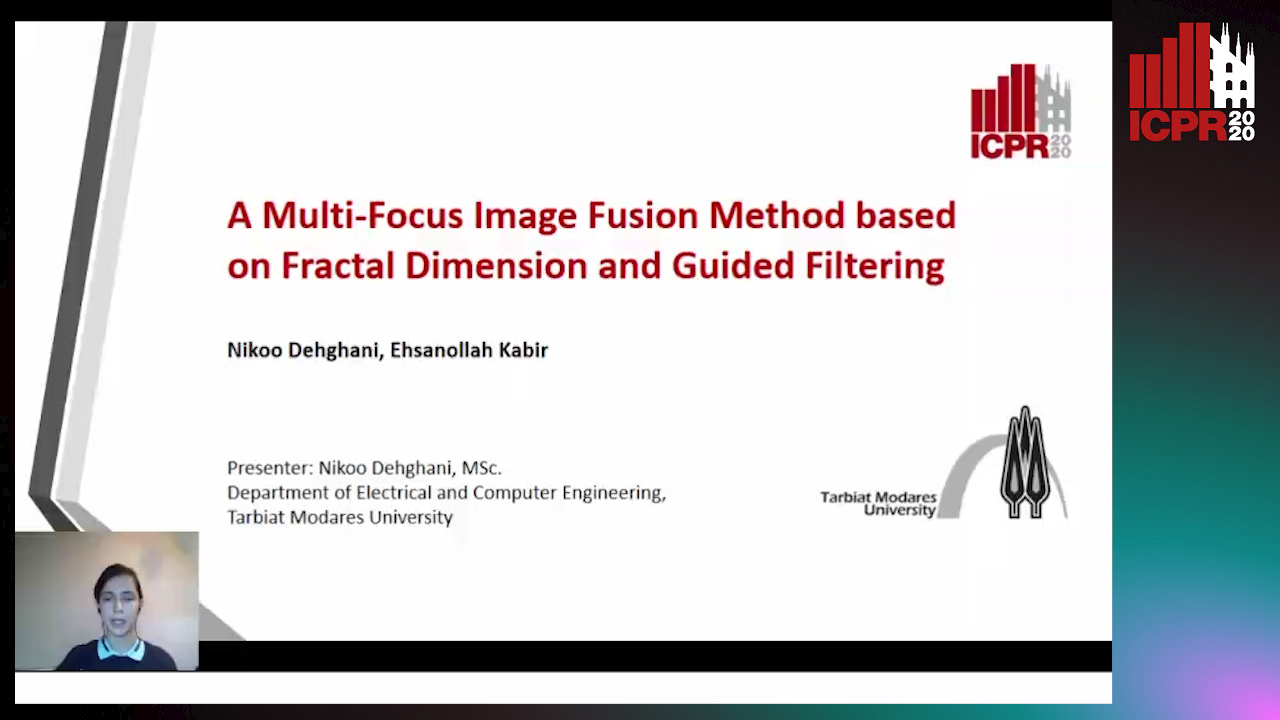
Auto-TLDR; Fractal Dimension-based Multi-focus Image Fusion with Guide Filtering
Abstract Slides Poster Similar
Residual Fractal Network for Single Image Super Resolution by Widening and Deepening
Jiahang Gu, Zhaowei Qu, Xiaoru Wang, Jiawang Dan, Junwei Sun

Auto-TLDR; Residual fractal convolutional network for single image super-resolution
Abstract Slides Poster Similar
Face Super-Resolution Network with Incremental Enhancement of Facial Parsing Information
Shuang Liu, Chengyi Xiong, Zhirong Gao

Auto-TLDR; Learning-based Face Super-Resolution with Incremental Boosting Facial Parsing Information
Abstract Slides Poster Similar
Adaptive Feature Fusion Network for Gaze Tracking in Mobile Tablets
Yiwei Bao, Yihua Cheng, Yunfei Liu, Feng Lu

Auto-TLDR; Adaptive Feature Fusion Network for Multi-stream Gaze Estimation in Mobile Tablets
Abstract Slides Poster Similar
Boundary Guided Image Translation for Pose Estimation from Ultra-Low Resolution Thermal Sensor
Kohei Kurihara, Tianren Wang, Teng Zhang, Brian Carrington Lovell

Auto-TLDR; Pose Estimation on Low-Resolution Thermal Images Using Image-to-Image Translation Architecture
Abstract Slides Poster Similar
Face Anti-Spoofing Using Spatial Pyramid Pooling
Lei Shi, Zhuo Zhou, Zhenhua Guo

Auto-TLDR; Spatial Pyramid Pooling for Face Anti-Spoofing
Abstract Slides Poster Similar
Super-Resolution Guided Pore Detection for Fingerprint Recognition
Syeda Nyma Ferdous, Ali Dabouei, Jeremy Dawson, Nasser M. Nasarabadi

Auto-TLDR; Super-Resolution Generative Adversarial Network for Fingerprint Recognition Using Pore Features
Abstract Slides Poster Similar
Selective Kernel and Motion-Emphasized Loss Based Attention-Guided Network for HDR Imaging of Dynamic Scenes
Yipeng Deng, Qin Liu, Takeshi Ikenaga
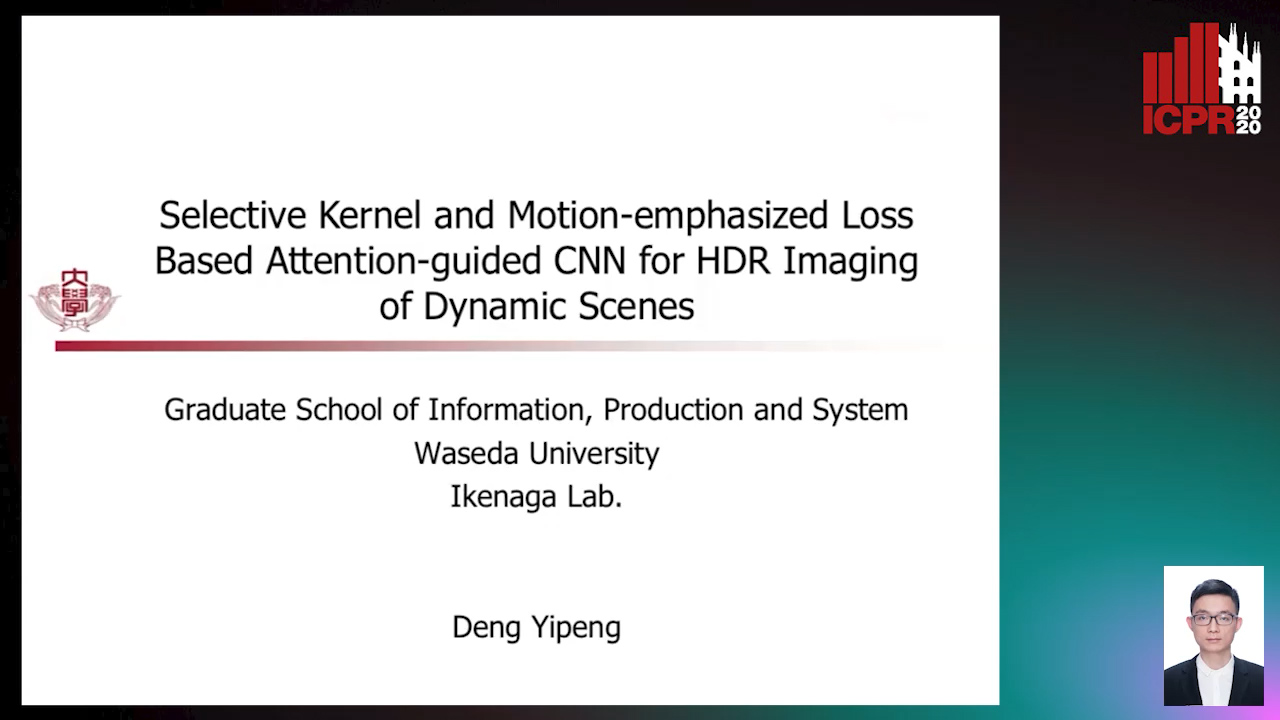
Auto-TLDR; SK-AHDRNet: A Deep Network with attention module and motion-emphasized loss function to produce ghost-free HDR images
Abstract Slides Poster Similar
Detail-Revealing Deep Low-Dose CT Reconstruction
Xinchen Ye, Yuyao Xu, Rui Xu, Shoji Kido, Noriyuki Tomiyama

Auto-TLDR; A Dual-branch Aggregation Network for Low-Dose CT Reconstruction
Abstract Slides Poster Similar
A NoGAN Approach for Image and Video Restoration and Compression Artifact Removal
Mameli Filippo, Marco Bertini, Leonardo Galteri, Alberto Del Bimbo

Auto-TLDR; Deep Neural Network for Image and Video Compression Artifact Removal and Restoration
Improving Low-Resolution Image Classification by Super-Resolution with Enhancing High-Frequency Content
Liguo Zhou, Guang Chen, Mingyue Feng, Alois Knoll
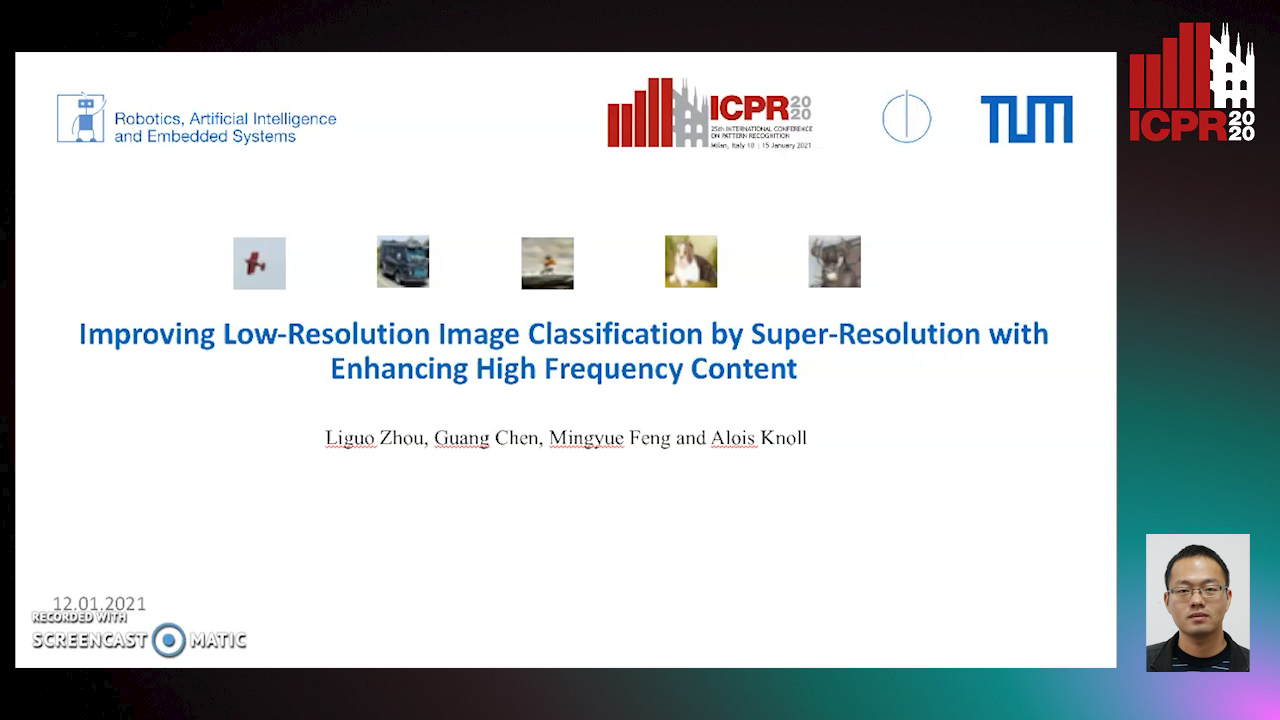
Auto-TLDR; Super-resolution for Low-Resolution Image Classification
Abstract Slides Poster Similar
Attentive Hybrid Feature Based a Two-Step Fusion for Facial Expression Recognition
Jun Weng, Yang Yang, Zichang Tan, Zhen Lei

Auto-TLDR; Attentive Hybrid Architecture for Facial Expression Recognition
Abstract Slides Poster Similar
MBD-GAN: Model-Based Image Deblurring with a Generative Adversarial Network

Auto-TLDR; Model-Based Deblurring GAN for Inverse Imaging
Abstract Slides Poster Similar
Multi-scale Processing of Noisy Images using Edge Preservation Losses
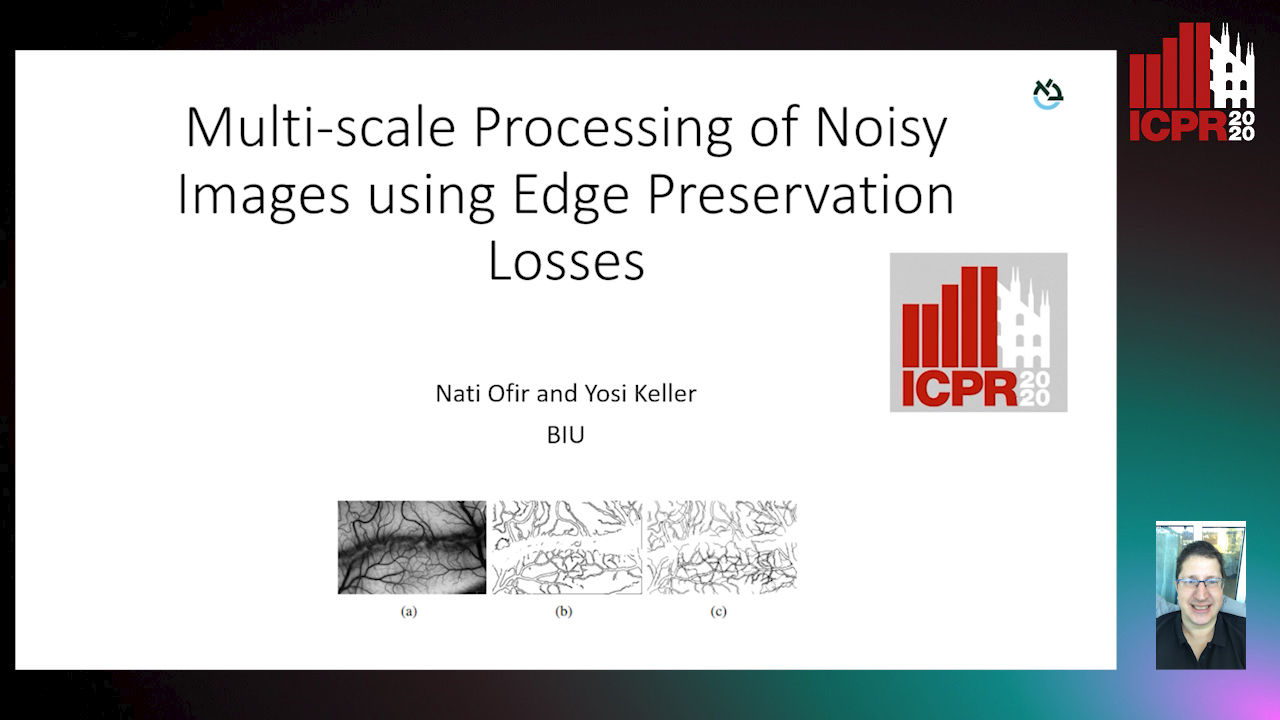
Auto-TLDR; Multi-scale U-net for Noisy Image Detection and Denoising
Abstract Slides Poster Similar
SIDGAN: Single Image Dehazing without Paired Supervision
Pan Wei, Xin Wang, Lei Wang, Ji Xiang, Zihan Wang

Auto-TLDR; DehazeGAN: An End-to-End Generative Adversarial Network for Image Dehazing
Abstract Slides Poster Similar
Position-Aware and Symmetry Enhanced GAN for Radial Distortion Correction
Yongjie Shi, Xin Tong, Jingsi Wen, He Zhao, Xianghua Ying, Jinshi Hongbin Zha

Auto-TLDR; Generative Adversarial Network for Radial Distorted Image Correction
Abstract Slides Poster Similar
An Unsupervised Approach towards Varying Human Skin Tone Using Generative Adversarial Networks
Debapriya Roy, Diganta Mukherjee, Bhabatosh Chanda

Auto-TLDR; Unsupervised Skin Tone Change Using Augmented Reality Based Models
Abstract Slides Poster Similar
Extending Single Beam Lidar to Full Resolution by Fusing with Single Image Depth Estimation
Yawen Lu, Yuxing Wang, Devarth Parikh, Guoyu Lu

Auto-TLDR; Self-supervised LIDAR for Low-Cost Depth Estimation
RSAN: Residual Subtraction and Attention Network for Single Image Super-Resolution
Shuo Wei, Xin Sun, Haoran Zhao, Junyu Dong

Auto-TLDR; RSAN: Residual subtraction and attention network for super-resolution
Visibility Restoration in Infra-Red Images
Olivier Fourt, Jean-Philippe Tarel

Auto-TLDR; Single Image Defogging for Long-Wavelength Infra-Red (LWIR)
Abstract Slides Poster Similar
Towards Artifacts-Free Image Defogging
Gabriele Graffieti, Davide Maltoni

Auto-TLDR; CurL-Defog: Learning Based Defogging with CycleGAN and HArD
Deep Realistic Novel View Generation for City-Scale Aerial Images
Koundinya Nouduri, Ke Gao, Joshua Fraser, Shizeng Yao, Hadi Aliakbarpour, Filiz Bunyak, Kannappan Palaniappan

Auto-TLDR; End-to-End 3D Voxel Renderer for Multi-View Stereo Data Generation and Evaluation
Abstract Slides Poster Similar
Domain Siamese CNNs for Sparse Multispectral Disparity Estimation
David-Alexandre Beaupre, Guillaume-Alexandre Bilodeau

Auto-TLDR; Multispectral Disparity Estimation between Thermal and Visible Images using Deep Neural Networks
Abstract Slides Poster Similar
A Novel Deep-Learning Pipeline for Light Field Image Based Material Recognition
Yunlong Wang, Kunbo Zhang, Zhenan Sun
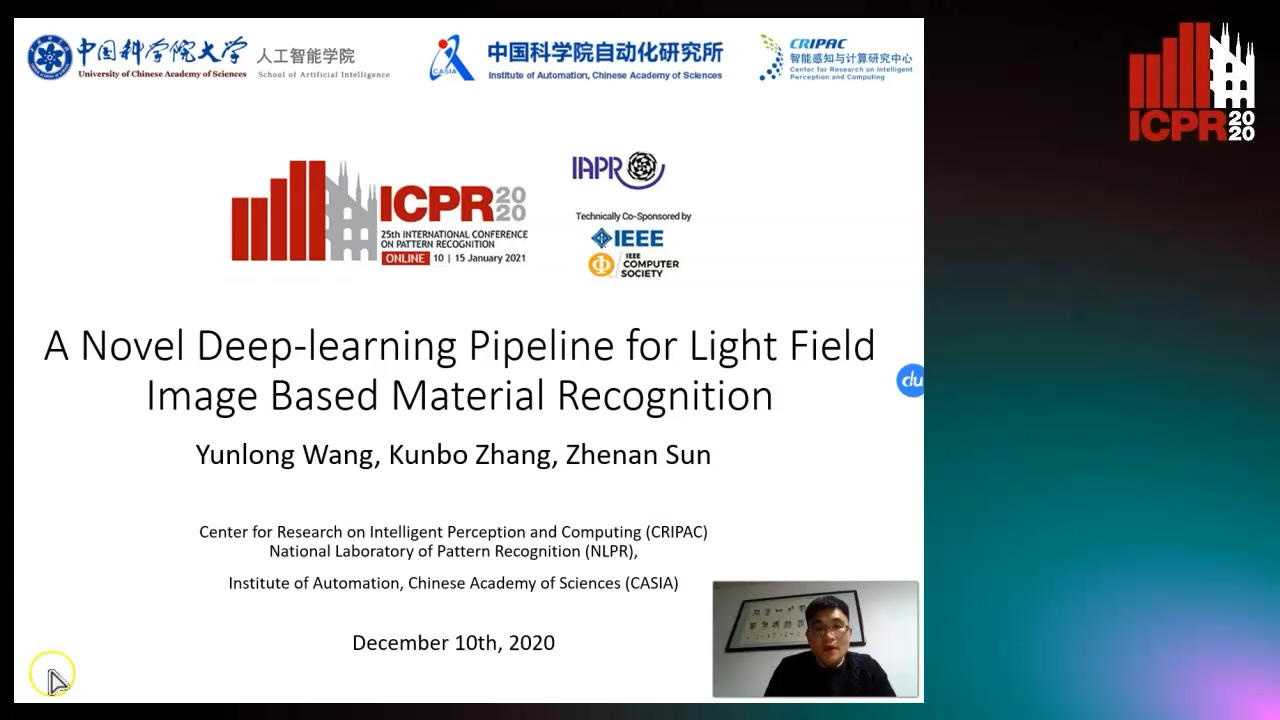
Auto-TLDR; Factorize-Connect-Merge Deep Learning Pipeline for Light Field Image Based Material Recognition
Viability of Optical Coherence Tomography for Iris Presentation Attack Detection

Auto-TLDR; Optical Coherence Tomography Imaging for Iris Presentation Attack Detection
Abstract Slides Poster Similar
Removing Raindrops from a Single Image Using Synthetic Data
Yoshihito Kokubo, Shusaku Asada, Hirotaka Maruyama, Masaru Koide, Kohei Yamamoto, Yoshihisa Suetsugu
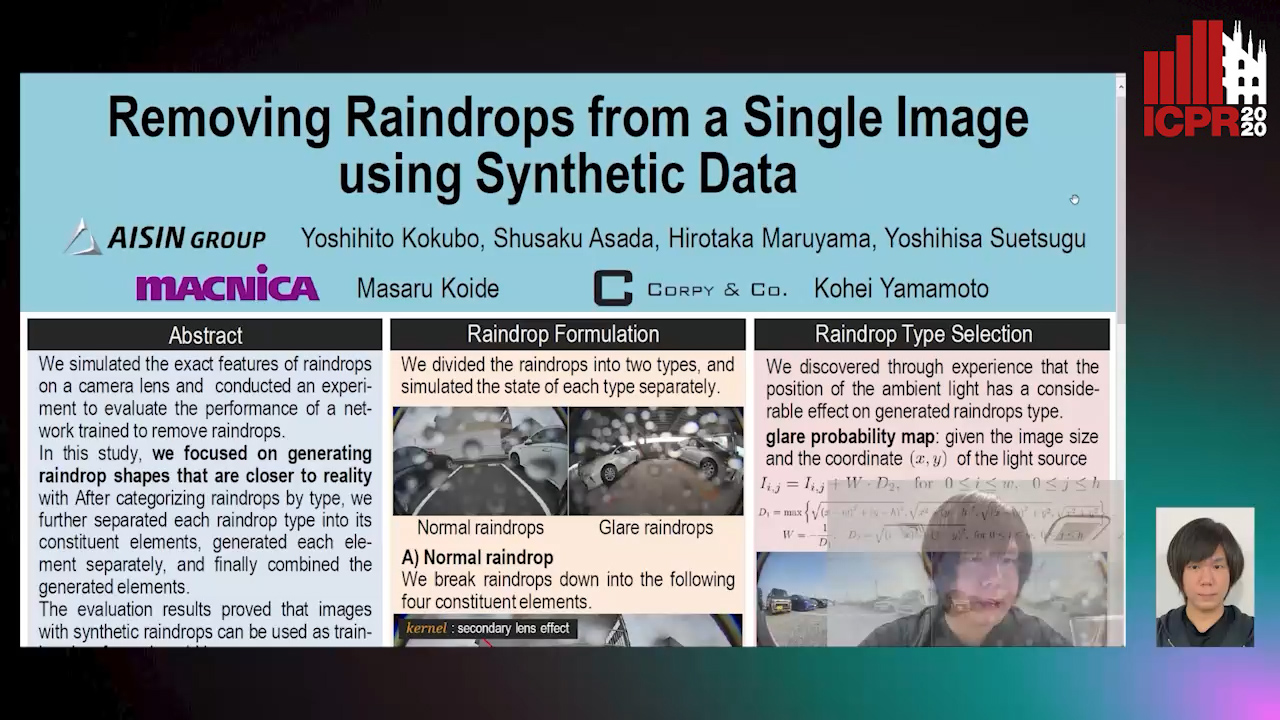
Auto-TLDR; Raindrop Removal Using Synthetic Raindrop Data
Abstract Slides Poster Similar
Detail Fusion GAN: High-Quality Translation for Unpaired Images with GAN-Based Data Augmentation
Ling Li, Yaochen Li, Chuan Wu, Hang Dong, Peilin Jiang, Fei Wang

Auto-TLDR; Data Augmentation with GAN-based Generative Adversarial Network
Abstract Slides Poster Similar
LiNet: A Lightweight Network for Image Super Resolution
Armin Mehri, Parichehr Behjati Ardakani, Angel D. Sappa

Auto-TLDR; LiNet: A Compact Dense Network for Lightweight Super Resolution
Abstract Slides Poster Similar
Learning Disentangled Representations for Identity Preserving Surveillance Face Camouflage
Jingzhi Li, Lutong Han, Hua Zhang, Xiaoguang Han, Jingguo Ge, Xiaochu Cao

Auto-TLDR; Individual Face Privacy under Surveillance Scenario with Multi-task Loss Function